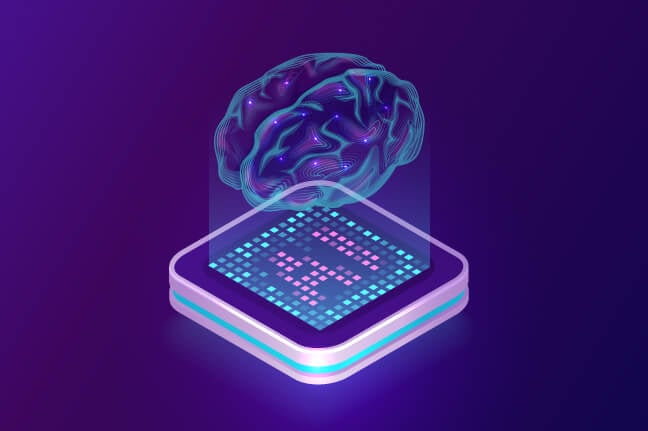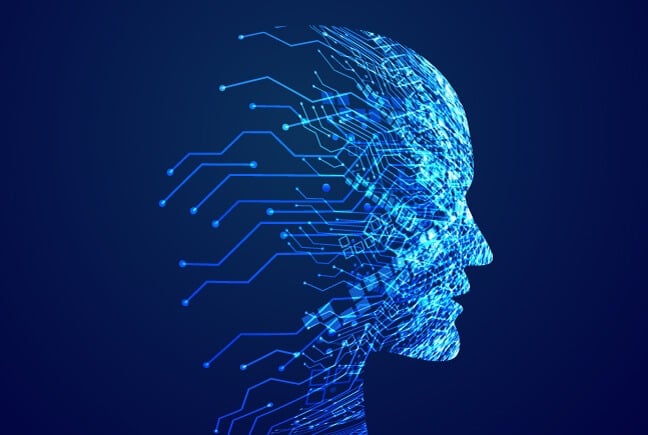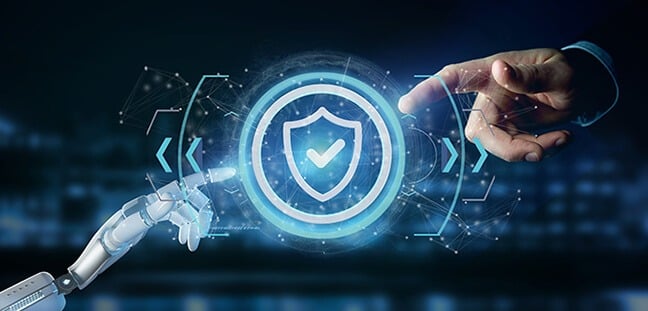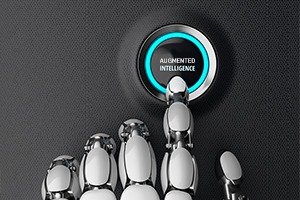Can we trust AI to deliver what it promises?
Artificial Intelligence (a buzzword?) is now increasingly being absorbed into just about every aspect of the economy. We read fascinating stories about how AI is transforming machines to become smarter and more intelligent than humans. However, for every remarkable success, such as autonomous cars, there’s also a colossal failure that doesn’t get as much attention. For example:
1. IBM’s “Watson for Oncology” canceled after $62 million and unsafe treatment recommendations
Watson for Oncology was developed to enable clinicians to uncover valuable insights from the cancer center’s rich patient and research databases. However, it soon began giving erroneous and downright dangerous cancer treatment advice. Watson was consequently canceled.
2. Amazon Axes their AI for recruitment because their engineers trained it to be misogynistic
Amazon wanted to build an A.I. engine which, “if you give 100 resumes, will spit out the top five.” However, the A.I. “learned” from its past (training) data that male, white candidates were more likely to be good fits for engineering jobs. No doubt, it was scrapped.
3. Microsoft silences its new A.I. bot Tay, after Twitter users teach it racism
Microsoft claimed that their new chatbot, Tay, would learn how to write more naturally and hold better conversations as more people talked with Tay. It went from tweeting ‘humans are supercool’ to full Nazi in less than 24 hrs, making antisemitic statements. Microsoft issued an apology that the company took “full responsibility for not seeing this ahead of time.”
According to recent research, 85% of AI projects eventually fail to bring their intended results. Such AI failures are expensive for businesses both in terms of time and money.
There are many reasons why AI fails to deliver: including the lack of proper skills, limited understanding of the technology, budget limitations, and so on. But the single most important reason why AI fails has nothing to do with AI but has everything to do with our expectations from AI.
I’m a huge believer in AI, having experienced its power first-hand at Contify. Having said that, I’m fully aware of its limitations as well. With the understanding of these limitations and how to overcome them, market and competitive intelligence teams can leverage AI to drive real business value from it. How? Let’s explore it in this article.
On The Subject Of Artificial Intelligence

AI refers to algorithms that learn from and find patterns in huge quantities of data. It promises to give actionable information to CI users to make informed decisions. AI can benefit the entire enterprise, including sales, marketing, customer support, fraud detection — anything that requires a prediction based on data. In 1947, Alan Turing said in a public lecture, “What we want is a machine that can learn from experience,” and that the “possibility of letting the machine alter its instructions provides the mechanism for this.”
How Do Machines Learn?
Machines learn much like how we, humans, learn.
Humans learn in two ways:
1. By interacting with our environment i.e. our experiences, and
2. Under the guidance of a teacher. Similarly, machines learn from data (experience) and algorithms (teacher). In Machine Learning (ML), which is one of the AI technologies, the training data is provided to develop prediction models that are based on ML algorithms.
Because machines learn from the data that is fed to them, there are limitations to predict the future unless it looks like the past.
Limitation of Machine Intelligence
Machines are optimized for performance, and therefore, they are much faster in processing information. They can recognize patterns better than humans, never get tired, or bored, which makes them the perfect contender for many tasks.
However, when it comes to connecting the dots, analyzing competitive information, reasoning from it, making predictions and recommendations using that information, and acting on it, machines fail. Thus, when it comes to driving competitive insights by thinking creatively and drawing inferences from information, machines have limitations.
On The Subject Of Human Intelligence

An analyst’s mind, i.e. human intelligence, is different from AI in many aspects. It absorbs new information and adapts to the evolving market landscape by utilizing a combination of different cognitive processes.
A human mind comes pre-configured with learning from millions of years of evolution that is genetically programmed, as compared to AI which is artificially programmed. Therefore, a two-year-old child can easily walk. But we need sophisticated engineering teams to make a robot balance and walk on two legs.
Human Ingenuity
Analysts can imagine, anticipate, and judge changing situations. They can work with less information. They can think for themselves. Furthermore, they are creative, can have a long-term vision, and plan for our future.
Humans, in general, are better at telling stories, designing new products, and implementing ideas such as fairness that are difficult for an AI algorithm to understand. Our thoughts and the resulting intelligent behavior, as well as our ingenuity, are something that differentiates human intelligence from artificial intelligence.
Just like AI, human intelligence has its strengths and limitations too.
Limitation of Human Intelligence
Human beings are less consistent and are prone to making errors while doing repetitive tasks. We have finite limits on productivity and are driven by emotions. Our complex thought process can, sometimes, interfere with our decision-making capabilities. AI can help mitigate some of these limitations.
The success of the human race throughout history has been about outsourcing their labor to others, first to animals and then to machines. Therefore, the right way to think about AI is how to combine it with human intelligence to achieve things that neither of them can achieve on their own! That is exactly what “Augmented Intelligence” is. The blending of intensive computational tasks with human knowledge and intuition.
Augmented Intelligence: Leveraging AI to enhance Human Intelligence

According to Gartner, Augmented Intelligence is a design pattern for a human-centered partnership model of people and artificial intelligence (AI) working together to enhance cognitive performance. This includes learning, decision-making, and new experiences. Svetlana Sicular, research VP at Gartner says “As AI technology evolves, the combined human and AI capabilities that augmented intelligence allows will deliver the greatest benefits to enterprises.” While Artificial Intelligence uses technology to enable machines to work and act like humans, Augmented Intelligence uses those same technologies to empower humans to work better and smarter. It augments human instinct with smart algorithms to deliver predictive insights with greater speed.
Augmented, which means “improved,” strengthens human intelligence by utilizing AI to find connections and discover deeper insights. In the competitive market intelligence, the processing power of AI takes over most of the data processing and guides analysts to make more informed and intelligent decisions at speed.
An example of this can be found in the experiences of the chess grandmaster, Garry Kasparov.
Average Human + Regular Machine Is Superior to a Strong Human Mind or a Powerful Machine
Garry Kasparov, in a recent HBR article, writes about how losing to Deep Blue in 1997 forced him to rethink the game of chess. He thought of chess, not as an individual’s game, but as a collaborative one that we can play with the help of AI.
In 1998, both Kasparov and his opponent Veselin, partnered with a computer in a game of chess. Kasparov had beaten Veselin 4-0 a month earlier. This time, with both players supported by computers, the match ended in a 3-3 draw. The use of computers nullified the calculative and strategic advantages of Kasparov.
Garry Kasparov thus concluded that “human mind + machine + better process is superior to a strong computer, or a strong human mind, or any combination of the two + inferior processes.” Something that we have validated at Contify as well.
In another HBR article, “Humans and AI Are Joining Forces”, the authors claim, “In our research involving 1,500 companies, we found that firms achieve the most significant performance improvements when humans and machines work together enhancing each other’s strengths. AI can assist people with information gathering, data crunching, thereby freeing them for higher-level tasks that require leadership, creative thinking, judgment, and other human skills.”
Download M&CI Process Template
How Contify uses Augmented Intelligence

In 2009, when we trained our first Machine Learning (ML) model, we realized that relying solely on a machine isn’t going to allow us to achieve the accuracy in the market and competitive intelligence that our users expect. ML was not sufficient to extract the actionable intelligence, which is subjective and contextual to our users. ML is based on probabilities, while our users need 100% accuracy to make informed decisions. Thus, right from the early days of Contify, we decided to complement our ML models with human intelligence. These were our earliest attempts at Augmented Intelligence.
At Contify, after numerous iterations over the years, we have developed methodologies, processes, and best practices that are designed to extract actionable intelligence from the ocean of digital information, using the combined intelligence of both machines and analysts’ insights.
Algorithms and analysts work in unison, each performing tasks they’re better at. AI processes the large amount of information that is aggregated by Contify’s extensive network of crawlers. The data is passed through an AI algorithms-based pipeline to process streams of data. Millions of data points are categorized and information is filtered in minutes that would otherwise require an army of analysts to do manually. AI algorithms then enrich the information by adding contextual meta-data that makes it easy for analysts to extract the insights.
Conclusion
While Artificial Intelligence is intended to remove human involvement, Augmented Intelligence is intended to enhance human abilities. It combines machines and humans like two pieces of a jigsaw puzzle, two halves of a whole machine, working in tandem for better results. Like that iron suit that transforms Tony Stark into Iron Man.
In the market and competitive intelligence, it would be wrong to expect AI to perform some magic or to dismiss it completely as the hype. The secret sauce of success lies somewhere in the middle. Success with AI requires the right mix of analyst instinct with machine intelligence.
It’s important to note that augmented intelligence shouldn’t be reduced to simple process automation. Creating a partially automated process isn’t the goal here. The goal is to redesign processes where an “analyst + machine” is superior to the best analyst or the best computer.
This will require not only AI technology but also analysts who can work effectively at the human-machine interface. And that’s the real challenge.
The winners in the market and competitive intelligence will realize the true potential of AI by seamlessly connecting analysts, processes, and algorithms with the right expectations. History proves that humans have performed far beyond their capabilities when they partner with machines. What our species has achieved after the Industrial Revolution is a testament to my point!



